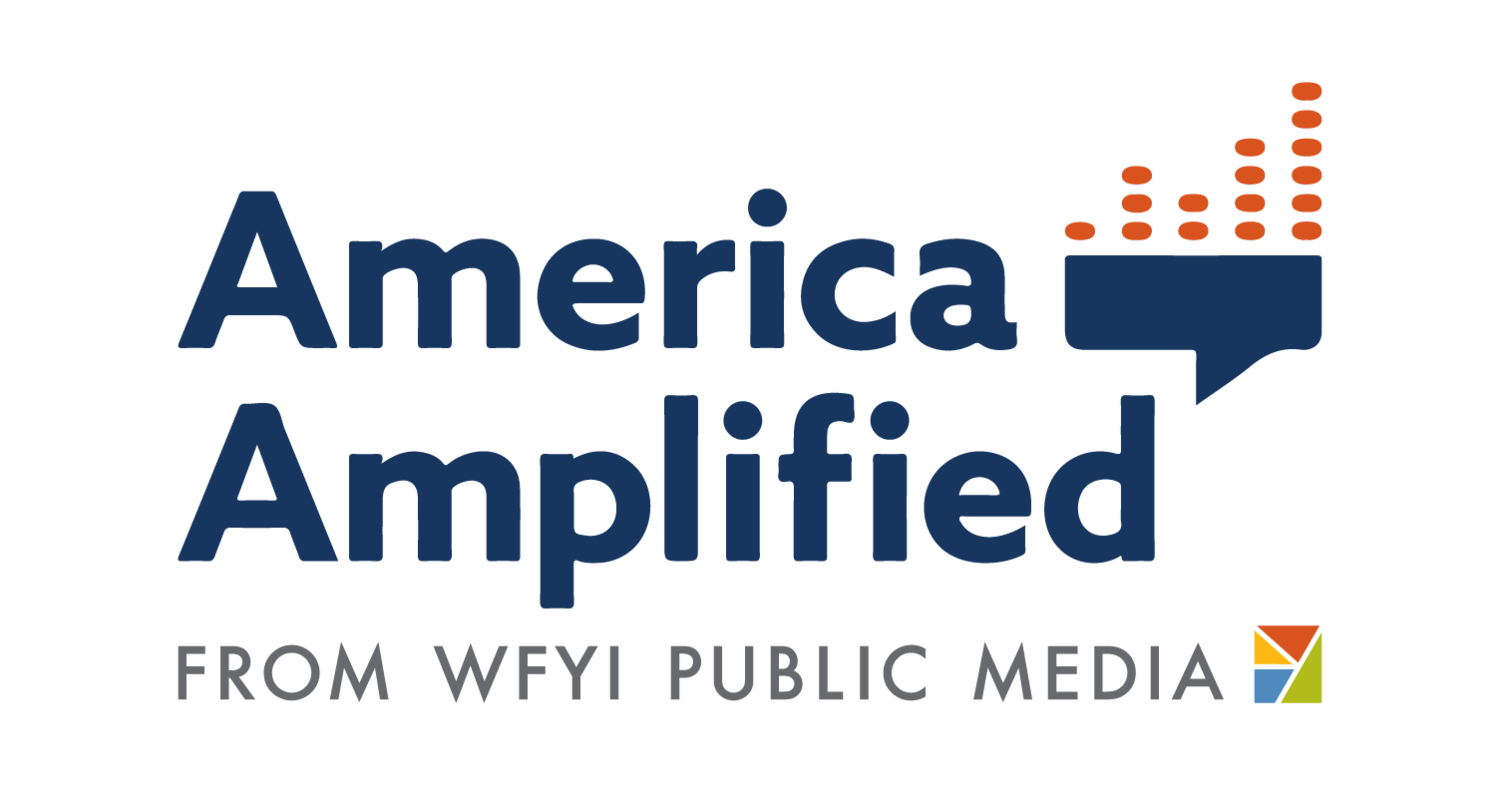At WITF, community engagement success is ‘absolutely critical to sustainability’
Cara Williams Fry has been the Chief Content Officer at WITF in Harrisburg, Pennsylvania, since 2010. WITF has a unique and successful culture of community engagement journalism. America Amplified’s Ann Alquist talked to Cara about how it works at the station and what advice she has for other stations interested in pursuing this approach. This conversation has been excerpted and edited for clarity.
Why was community engagement important in 2020?
Community engagement became even more important around covering the election in 2020 because we were worried that we hadn't connected with real people [in 2016 election coverage]. We knew going in that we needed to do more, and we needed to do better. We had to build trust with more people across the state.
So, in planning our election 2020 coverage along with America Amplified, our whole approach was community engagement. It was all about getting into the communities and spending real time with people. We didn’t want to do the stories where a reporter shows up for one day, does a story, leaves, and then acts like they know that community.
Our entire goal with election 2020 was to do community engagement by embedding reporters [in a few chosen communities], to make sure people knew them. They would work not only with the community leaders, but also the people who live there and are passionate about their town.
That was our singular focus — not to put a quota on the number of stories, but to make sure that our reporters got to know people in certain communities that feel they're underrepresented or feel like they're voices are never heard. In Pennsylvania specifically, it's very much just Philadelphia, Pittsburgh and Harrisburg, and everywhere else is no man's land. With that in mind, we very specifically picked communities that feel left out and deserted or underrepresented.
WITF has a director of community engagement. How did that job come about?
About a year and a half ago, I proposed creating a position at WITF for a director of community engagement. I knew it wouldn't be an overnight decision, but I also knew it was integral to our future success.
There was some resistance to the idea because, at that time, it was an unbudgeted position, a brand new position and [there was] a belief that the position should live in a marketing department, which we also did not have. But I thought the position should exist in the content department and believe that community engagement and marketing have separate goals and missions but need to work in parallel for success.
The community engagement director has to be at the [editorial] table, listening to what’s going on, responding to the ideas that are germinating, to work with and focus on the reporters, editors and in our shop the educators.
We had one person at the station who had the most experience organizing engagement events and producing. She and I really thought about how you get true engagement.
My argument was we have this person with this skill set already and who is much better prepared than anyone else. She had worked with me for years and was the right person to elevate into a position of leadership because people trusted her, and she has the wherewithal to be thoughtful about the needs of our newsroom and the station.
You launched the ‘Toward Racial Justice’ video series in 2020. How did that happen?
“Toward Racial Justice” was a really good example of an almost immediate success in having a director of community engagement. [“Toward Racial Justice” is a biweekly YouTube series of community conversations addressing systemic racism and injustice in Central Pennsylvania and beyond.]
If we had not had a person that had this as their sole job, we could not — I can say with emphasis — we could not have pulled this off every other week since June with really good quality guests and with really good quality conversations. Between COVID and the election, it would have gotten lost, since our staff was already working at max capacity. Because we had this position with this person with these talents and understanding outreach, and in-reach, we succeeded.
Within a week of the intense social unrest and protests, we invited six Black people from throughout our community to be part of a subcommittee for “Toward Racial Justice.”
Then we hired, as a moderator, a man who is a host on the only black-owned radio station in all of Pennsylvania. The series was run by our director of community engagement, in conjunction with a few other people from our newsroom and internal diversity committee.
The external subcommittee, which was originally filled with Black people, is now expanding to Black and Brown people. Because this is her job, to focus on community engagement, to make sure we were talking to the right people — we continue to grow and produce these conversations.
What are your next steps?
At the time we reacted to something that mattered in our community and we created a platform for community conversation. So now we have to analyze, is it working? And is it achieving our goals? And if not, what can we do?
Also — what are our goals? Is it just to have a large audience? Is that our goal or is it to have a diverse audience that we've never had before? Or is this a mission-based thing or is it a combination of all of the above? Is it a trust building exercise?
WITF’s “Toward Racial Justice” is a biweekly YouTube series of community conversations addressing systemic racism and injustice in Central Pennsylvania and beyond.
As a mission-based organization, we need to continue to do this kind of outreach. We need to continue to build trust and conversation, but how do we make sure it's getting to as many people as possible? We're talking about turning it into a radio program after it's on YouTube and Facebook, and then offering it to the other Pennsylvania stations in the market.
We want more and more people to hear these conversations and to become part of the conversations.
We, as the NPR/PBS station in central Pennsylvania, can't just show up when it's a thing and then walk away. We're really trying to look at how to make it stronger, how to make it deeper and to engage a more diverse audience.
What is your role in supporting community engagement?
My job, fundamentally, as the chief content officer is to try to help people work together in a team landscape that's not siloed. I have a team leaders’ group that meets with me every Thursday to talk about the big picture ideas. I usually assign one person to carry out the idea, and to rely on every other person at the table as a resource. Everybody has their own responsibility, and everyone has been given the authentic power to make their decisions and to move forward.
We don’t want five of me at the table; we don’t want five of any kind of the same person at the table. We bring together this group of people who all care passionately about public media, care about their piece of it and I have worked with them to understand the other pieces of the puzzle better.
You learn a little something from one person, and that idea bounces and a little something different bounces off of that person. And all of a sudden, everything we're doing is bigger than what any one of us individually would do.
How important is community engagement to station sustainability?
I think community engagement is absolutely critical to sustainability. Once upon a time people did community engagement and they were like, oh my god, it's so much work for so little return. There's only 50 people and I spent six months and all this money doing this event! And so, management and staff got away from it, right? And there wasn't a position dedicated to engagement … it was just someone's extra/additional responsibility.
Then the trust factor came into play, right? All of a sudden people across the nation aren't trusting journalists anymore.
Community engagement is a great way to rebuild trust, thereby build brand and get more underwriting and sponsorships. Sponsors want to be associated with our name because we do good, impactful work and we're in the right place to help build bridges in our communities.
Then there are the questions: What is the goal of engagement? Is it to raise money? Is it to always grow a larger number of attendees? Maybe someday I would like it to at least raise enough money to pay for itself. But it is our mission to build trust and deliver quality information. People know that they can come and talk with us, whether it's a fun children's event, a trusted news conversation or a really serious end of life issue. We can be there for people with different needs.
Our goal is to touch individuals and communities and to engage people in a way that will continue to build on who we are because we are a community resource. Our public media institution doesn’t just serve the community, we’re part of the community. The only way to do that, to both serve and be a part of the community, is to have community engagement.
How do you work through failures and celebrate successes?
It takes time to build trust. You can't ever have the mindset to throw someone under the bus if something doesn't work. You have to talk it through, regroup and talk about what worked and didn't work and then offer solutions.
You have to offer authority. That's a strong word, but you have to make sure the individual team leads know they will be supported as they make decisions. I always say if people hate a project, it's my fault. If people love the project, it's the team's success.
We often celebrate the small moments. I don’t endorse the concept to hold champagne for the absolute best thing ever in life, and then they never drink it. We celebrate the team and successes both big and small with champagne, chocolate, laughter and pride. As well as the commitment to keep doing the good work.

